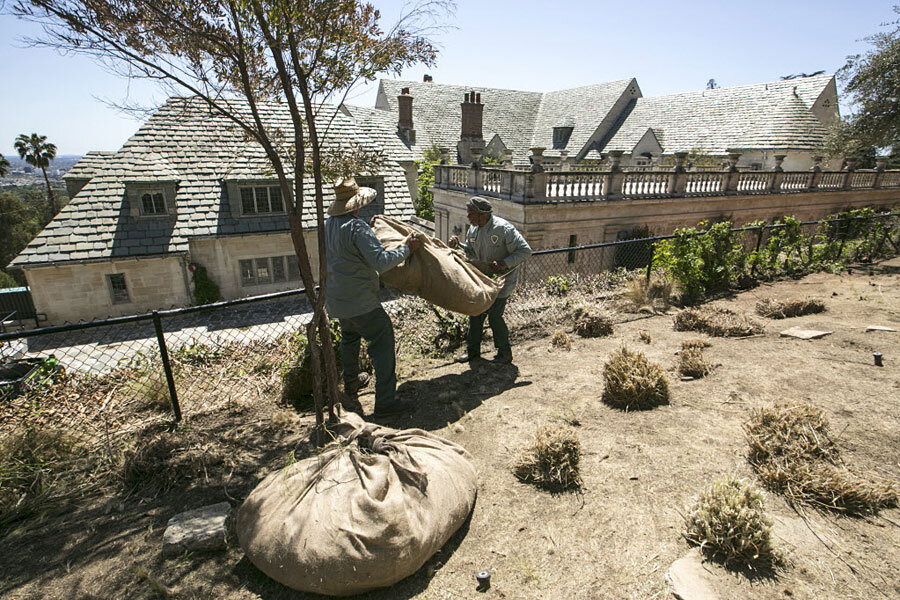Has water conservation become a way of life in California?
Loading...
Some habits are hard to break – and that might be a good thing for parched California.
No longer under strict, drought-induced water conservation regulations, California residents still reduced water consumption by 21.5 percent in June from the baseline of June 2013. June was the first month since the restrictions were relaxed.
"For many conservation is now a way of life, and in our book that's a success," Jasmine Oaxaca, an enforcement specialist with the state water board, told the San Jose Mercury News.
Last June, 410 urban areas were given water conservation targets ranging from 8 to 36 percent based on its per capita water use in 2013, with fines for missing the targets.
Although California residents have not reverted to pre-conservation ways since the easing of this system for the most part, the report released Tuesday by the State Water Resources Control Board shows water conservation has fallen. June 2015 saw a 27.5 percent drop in water use from the baseline year 2013.
Over the past 13 months, the state collectively cut water use by 24 percent, just shy of the 25 percent target.
Despite being in the fifth year of a historic drought, a wetter winter allowed state officials to ease the restrictions put in place last year. The Mercury News reports that the winter of 2015-2016 was the wettest in Northern California since the drought began and some large reservoirs are now over 90 percent full. Southern California, however, received far less rain.
Some environmentalists say the restrictions should not have been relaxed so readily because of this uneven rainfall. Much of the state is still in severe drought.
"We are trying to recognize that conditions have changed this year and while we are in a statewide drought, conditions have eased for some parts of the state," Mark Cowin, director of the state Department of Water Resources, said in May when the regulations were relaxed.
At the same time in May, Gov. Jerry Brown issued an order to make some of the water conservation rules permanent. Those include a ban on watering lawns within 48 hours of rainfall, hosing off sidewalks and driveways, and having water flowing into ornamental fountains – unless it is cycling through, being recirculated. Anyone washing a vehicle must use a shut-of nozzle on the hose and local governments cannot irrigate ornamental turf on public street medians.
"The community spirit of realizing that water is something to treat with respect and not take for granted is holding," Felicia Marcus, chairwoman of the water board, said about Tuesday's report. "Most importantly is for people to keep the lawn on a water diet."
Regulators did say in May that they maintain the authority to return to the restrictions if water conservation slips or if the wet winter turns out to just be a blip. That was reiterated in Tuesday's announcement when the water board said they will reinstate the mandatory water restrictions in early 2017 if it proves necessary.
But for now, Californians can do their part by continuing to use their newfound water conservation techniques, and hope that greener lawns and longer showers are around the corner.
This report contains material from the Associated Press.








